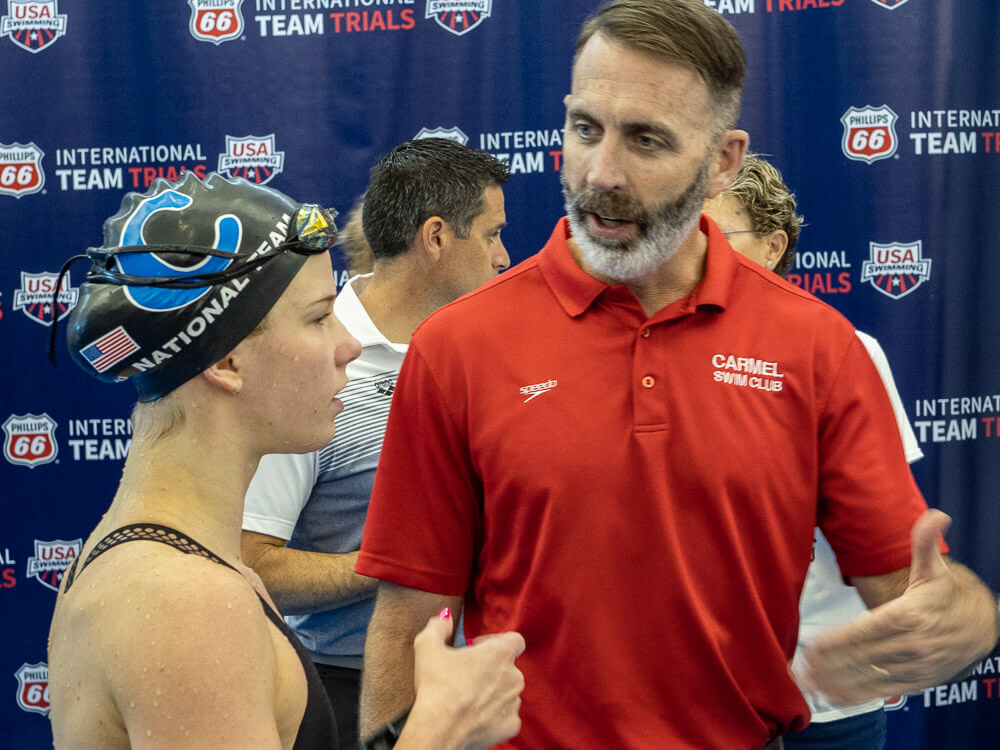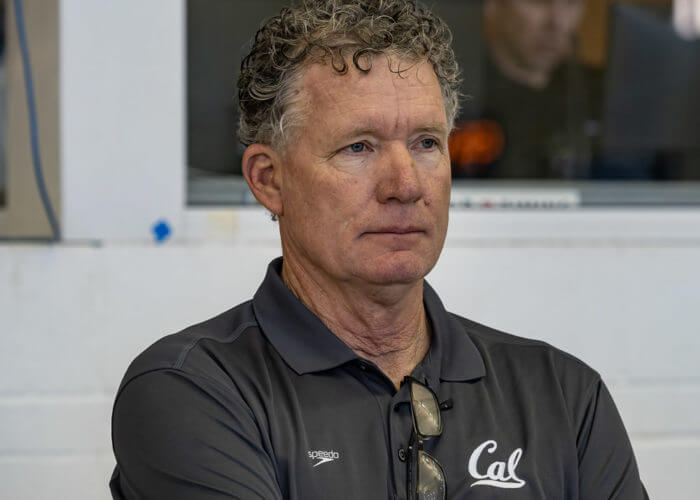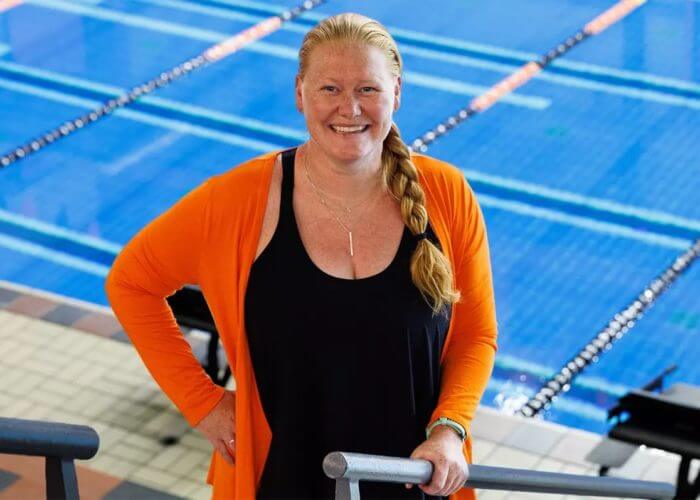Coaches Corner: Why Are Swimmers Now Able to Produce More Consistently Fast Performances Throughout the Year?

Coaches Corner: Why Are Swimmers Now Able to Produce More Consistently Fast Performances Throughout the Year?
In the past, swimmers tended to produce fast times only once or twice per year. Now, we are seeing consistently swift performances across the calendar. Why? In this Coaches Corner, several coaches discuss the new phenomenon.
DAVID MARSH, CAL
I think increasing the number of peak meets across the year has been a natural evolution in our sport by learning from the experience of other sports and appreciating the swimmers we work with are, indeed, capable of performing at a very high level more often.

Photo Courtesy: Peter H. Bick
Coaches know that psychological and consistent emotional engagement by the athletes is often the main contributor to maximum progress in our highly measurable sport. Many of us coaches have found that offering more frequent focused meets fits physiological, motivational and even family considerations. Here are a few reasons and benefits of more frequent peak meets:
- We professional coaches have much more access to information and data across many sports and understand that training cycles are complex and that the results from a particular cycle depend on multiple factors, a few of which are growth, recovery, technical and tactical improvements.
Adaptations that result in improvement are individualized to a point where it helps to do more frequent peak meets to determine how to help the athlete with the next steps to make progress.
- We are training swimmers more as athletes, and the progress of combining dryland along with other equipment and technologies allows the athletes to have more ways to improve rather than just more laps in the pool. Starting with the Speedo “Shark Skin” and continuing to this day, any swimmer on any given day can squeeze into a technical suit and feel instantly near their best form.
* * *
As with most things involved in pushing human potential to the limit, there is a pendulum that swings from training enough to going to full extremes. Fortunately most coaches and programs understand that extreme commitment isn’t only measured in the number of laps, but in the commitment to the total process through training, recovery, stress management and, hopefully, some degree of personal care and balance.
CHRIS PLUMB, CARMEL SWIM CLUB & CARMEL HIGH SCHOOL
- Reduced Volume, Increased Quality: Historically, swimmers used to undergo grueling training regimes with high-volume workouts. However, modern training methods have shifted toward a focus on quality over quantity. By reducing overall volume, but increasing the intensity and specificity of training sessions, athletes can avoid overtraining while still maximizing performance potential.
- Consistent High-Intensity Training:Athletes now incorporate more consistent high-intensity speed work into their training routines. This not only helps in developing race-specific skills and conditioning, but also enables swimmers to maintain peak-performance levels throughout the year. Regular intervals of high-intensity training stimulate physiological adaptations necessary for sustained fast swimming.
- Strength and Conditioning Emphasis:The integration of strength and conditioning programs has become a cornerstone of modern swim training. Swimmers now spend more time in the weight room, focusing on exercises that enhance strength, power and overall athleticism. Improved muscular strength and resilience contribute to better technique, reduced injury risk and increased efficiency in the water.
ABBY BRETHAUER, PRINCETON UNIVERSITY

Photo Courtesy: Princeton Athletics
I think that we have gone away from the overtraining with just a lot of yardage and become more specific in our weekly training cycles. I also feel that all athletes are believing they can be great more than once a season, so, mentally, they are able to approach meets with a focus that allows breakthrough swims at different points across the season.
MIKE DEBOOR, LAKESIDE SWIM CLUB
- I think athletes perform up to what is needed to be successful, so if they have to swim faster to be in a final or make a time, they find a way—especially those elite ones. Yes, some fall off, but if they want to make a junior team, etc., they will rise to that occasion.
- I think training is not as long, and either by pool-time limits or design, kids swim fast, and the improvements come in smaller portions versus one large drop at the prime meets.
- I think there’s much more quality in training and less just-get-volume-in, plus they need to compete, so they need to be fast more often. Gone are the days of just swimming a meet to swim. The meets are more important, and most suit up more and are more ready to race.
- We have always done more on the fast end, and 30 years ago, I was told, “Not enough volume,” and now we are pretty par for the course…and even told we go too hard. I think our volume is too low, and we suffer in some ways from too much “fast,” but “fast” is fun and challenging. It’s hard to change course from what you have done—I still search for the right mix, same as all others.
- Meets became a priority in COVID, so they are more important to this generation. They grew up not knowing if they would have another meet and swimming fewer events.
- We are all better and realize the importance of every energy system and probably hit that balance more often.
Overall, I still think we have more athletes who are better, more coaches or teams that are better, and the swimmers will do what it takes to be successful, so they learn to swim at a high level to (achieve that goal).
ADAM MADARASSY, EAGLE AQUATICS
I think what changed is the mindset about it and the training routine. People realized it can be done, so they started designing training accordingly—and the resources have improved…such as better knowledge and different options about recovery methods.




As a former swimmer and older current swimmer. Like many sports training has evolved. As well the kids have also. They are not being held back from the training needed to get better. I believe it’s an overall better outcome for the athletes, coaches, parents and everyone involved in their success. The kids don’t have to feel they can’t ever be better to get to that next level. Whatever that level is for them. The training is out there for every kids to be the best swimmer. I have watched my son grow in only a short window 1.5 years of ever swimming. From a 58.8 Now posting a 26.8 free 26.1 relay split along with other time drops at 11. Through our training outside of just the pool. So I agree with what I have read and very excited for where swimming is headed. Ps: Olympics put 50 meters sprints into the Olympics, not just free. Even 200 medley and free relays. It would be dynamic to have those races with the amount of fast athletes today.